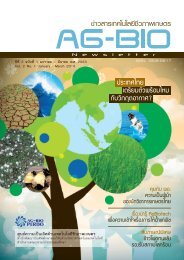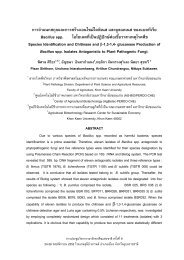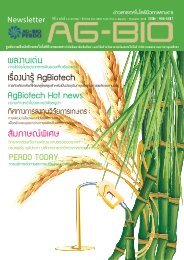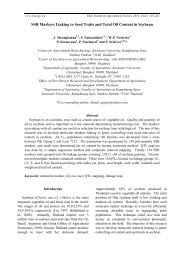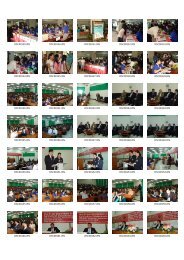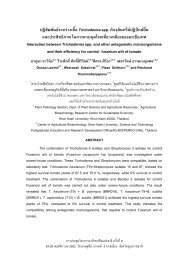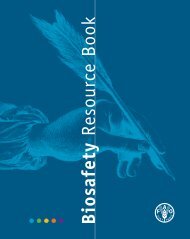Biosafety Manual PDF - Lawrence Berkeley National Laboratory
Biosafety Manual PDF - Lawrence Berkeley National Laboratory
Biosafety Manual PDF - Lawrence Berkeley National Laboratory
Create successful ePaper yourself
Turn your PDF publications into a flip-book with our unique Google optimized e-Paper software.
<strong>Biosafety</strong> <strong>Manual</strong><br />
IBC-approved version (May 18, 2010)<br />
pathogens or infectious agents. Listed and linked below are biosafety standards that cover<br />
human pathogens.<br />
• Human Etiologic Agents (NIH Guidelines)<br />
The NIH Guidelines provide a list of human pathogens and their RG2, RG3, and RG4<br />
designations in Appendix B (Classification of Human Etiologic Agents on the Basis of<br />
Hazard) of the NIH Guidelines (also see Appendix B of this manual). Work with human<br />
pathogens at LBNL will be conducted in accordance with the agent-specific RG designations<br />
in Appendix B of the NIH Guidelines and this manual.<br />
• BMBL Human Pathogens<br />
BMBL agent summary statements contain BL-specific containment guidance for specific<br />
human pathogens (see Section 3.3.2.1). Work with human pathogens at LBNL will be<br />
conducted in accordance with the IBC. The IBC will determine the proper containment level<br />
for pathogenic work, and use the recommended BL guidance presented in BMBL agent<br />
summary statements when available and applicable to the work activity. See Section 4.4 of<br />
this manual for additional information on BLs.<br />
• DOE WSHP Biological Etiologic Agents<br />
The DOE WSHP regulation (10 CFR 851, Appendix A, Section 7) has specific requirements<br />
for “biological etiologic agents.” LBNL’s program to comply with 10 CFR 851 defines a<br />
biological etiologic agent as an agent of biological origin (e.g., bacterium, fungus,<br />
parasite, virus, etc.) that causes disease in humans (i.e., pathogenic to humans). See<br />
Appendix B of this manual for the NIH list of human etiologic agents. See PUB-3000,<br />
Chapter 26, Appendix D, for specific LBNL requirements related to biological etiologic<br />
agents under 10 CFR 851.<br />
• OSHA Bloodborne Pathogens<br />
See Section 3.3.3 and Appendix C of this manual for requirements related to human<br />
pathogens that are considered bloodborne pathogens (BBPs) under the OSHA<br />
Bloodborne Pathogens Standard.<br />
• CDC Select Agents<br />
The Health and Human Services (HHS) CDC regulation on select agents and toxins lists<br />
agents that are both select agents and human pathogens. See Section 3.3.2.5 of this<br />
manual for more information.<br />
3.3.2.3 Plant and Animal Pathogens<br />
See Section 3.3.3 (USDA-Regulated Materials, Organisms, and Agents) for information on plant<br />
and animal pathogens and Section 3.3.2.5 for more information on plant and animal pathogens<br />
that are also select agents.<br />
3.3.2.4 Biological Toxins<br />
Biological toxin, biotoxin, or toxin is a poisonous substance produced by a living organism.<br />
The poisonous nature of toxins means that they may cause death or severe incapacitation at<br />
Printed copies are not official versions of this manual. Before using the printed copy, verify that it is the most current version.<br />
18



